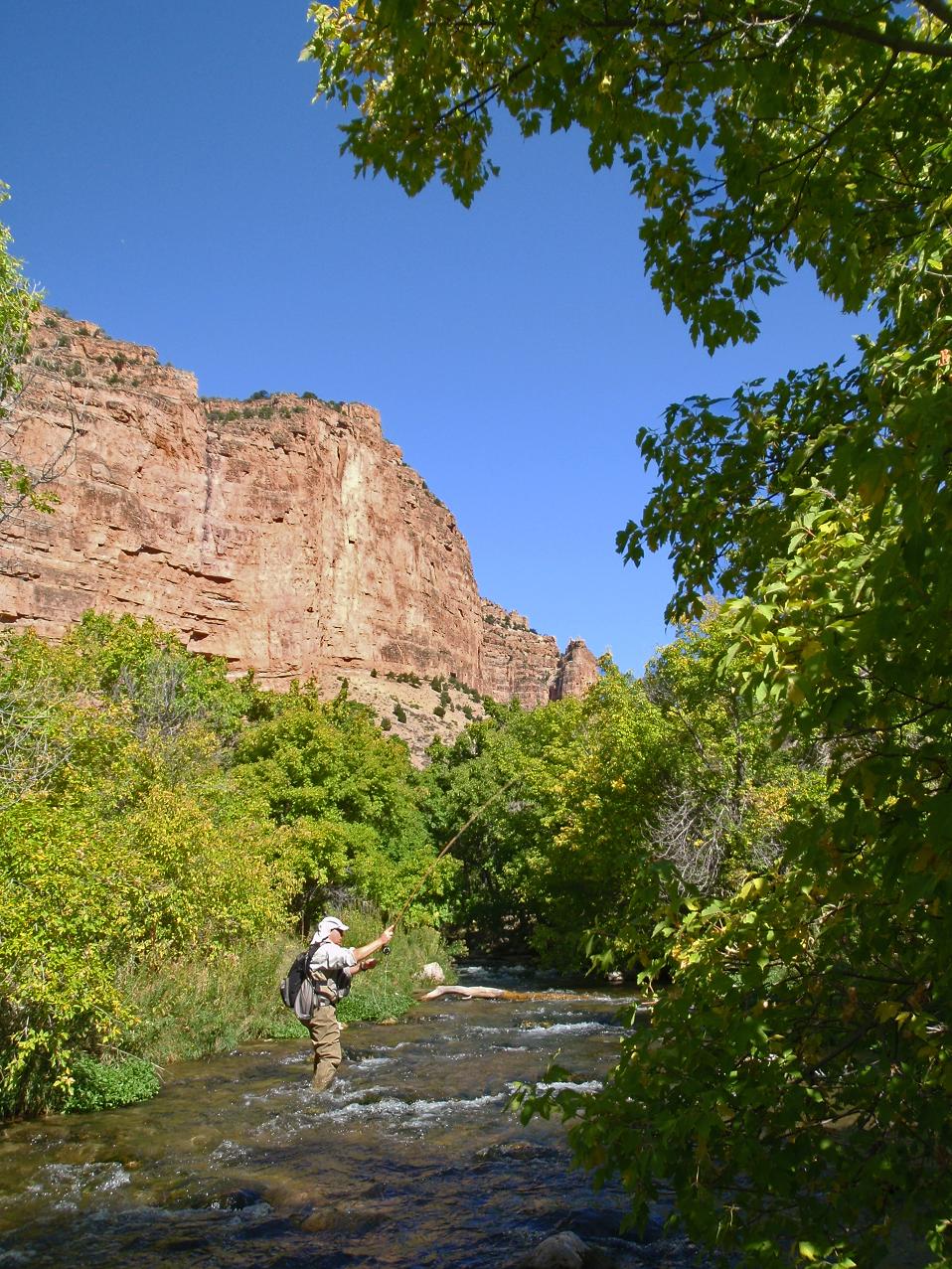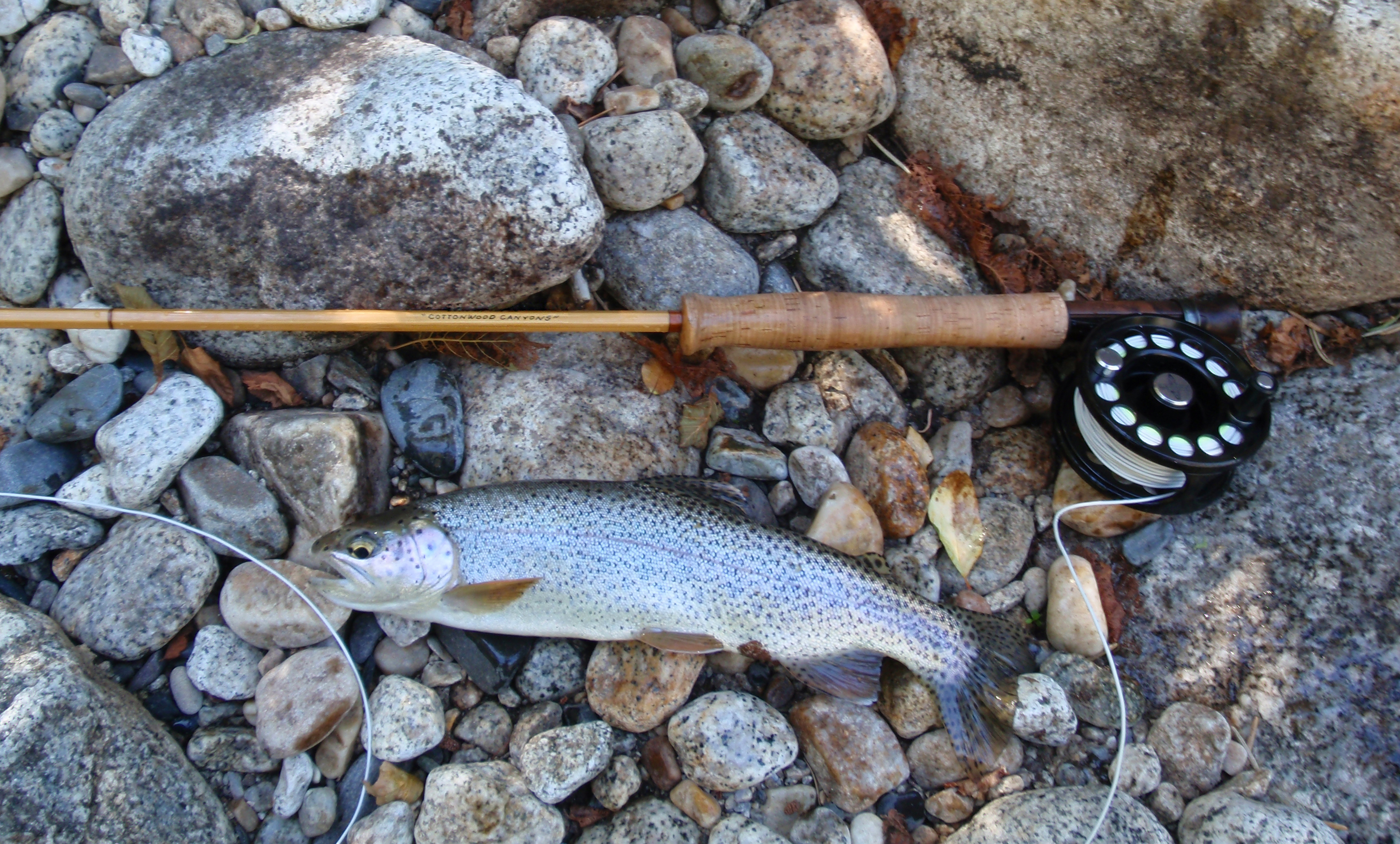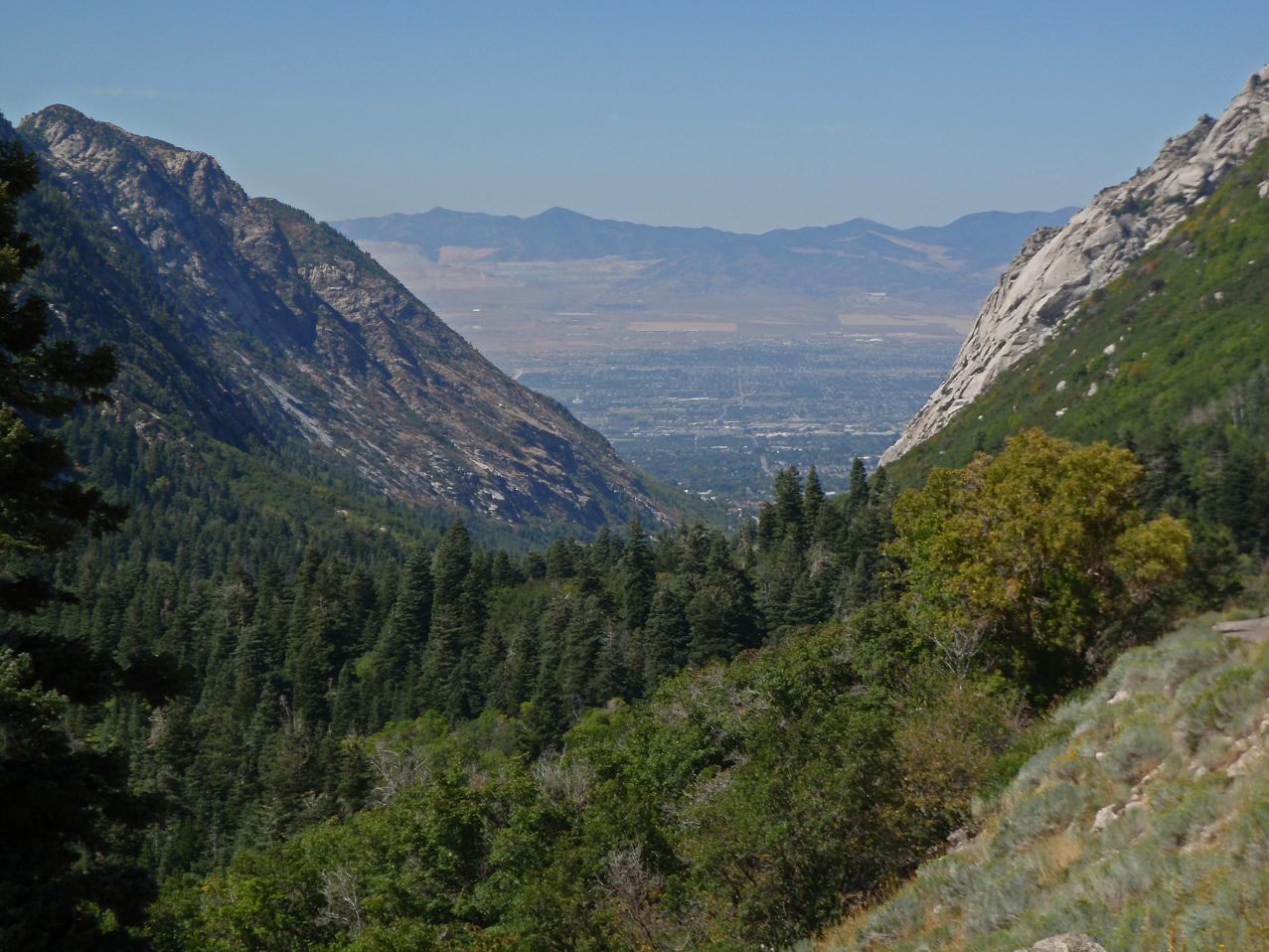|
| Fishing Jones Hole with my Reams 4 weight |

|
This is the first rod that I received after I moved from Colorado to
Utah. I had lived in Colorado for 16 years, and had grown to know and love the fishing opportunities there.
Then, work brought me to Salt Lake City. I mourned the loss of all my local fishing knowledge, but after a while, I
began to discover lots of terrific fishing spots in my new home.
I had commissioned this rod while I still lived in Colorado. I wanted
a rod for fishing streams and small rivers. It's sometimes difficult to keep the line out of the current when you're
standing on one side of the creek, and trying to fish the slower water on the other side, and so I figured that the
longer reach of an eight and a half foot rod would be useful when fishing across the current.
The rod was originally going to be named the "Forest Canyon" for my
favorite section of the upper Big Thompson River in Rocky Mountain National Park. After I moved to Utah, however, I
realized that I wouldn't be fishing Forest Canyon very often, and I should find another stream to give the rod its name.
As it turned out, we bought a home right at the mouth of Little Cottonwood
Canyon in Salt Lake. I began exploring both Big Cottonwood Canyon and Little Cottonwood Canyon. They are
similar, in that they are both small-ish streams, with small-ish fish, and the fishing is often in pocket water and plunge
pools.
I decided to name my new Reams rod after the Cottonwood Canyons, my new
"home waters." The fishing in these two canyons seemed idealy suited for a longer 4 weight rod.
| Jim Reams 4 Weight with a Utah Rainbow |

|
When the rod arrived, I took off early from work, and headed up to Big Cottonwood
Canyon to try it out. At first, I was a bit stymied. All my casts were 3 or 4 feet too long. I'd aim for
a pool, and hit the rock or bank behind it. It was partially the extra length of the rod, but after a while, I figured
out that the Reams rod loads differently than the other rods I was accustomed to. The rod tends to load and apply power
to the line much more easily than other rods I've used. At first, this threw me off, but after a couple hours of
fishing, I adapted my casting stroke, and began to really enjoy it.
The Reams rod doesn't like to be hurried. It rewards a relaxed,
gentle casting motion, and if you remember to let the rod do the work, then casting becomes almost effortless.
I found that even in tight quarters, where there isn't room for much of a cast, the Reams rod will load and shoot line very
well, provided you are patient and allow the rod to do the work. Roll casting is particularly easy.
This rod seems to really amplify the user's input like no other rod I've used. Good casting technique is rewarded with
fluidity and smoothness that is a great joy, laying out the line with precision and delicacy. However,
jerky, poor casting technique is magnified as well, with corresponding loss of control.
This rod is like a thoroughbred, and will only give its best performance with
a competent hand on the reins.
Before I used the rod, I wondered if a long 4 weight rod would be too floppy
and soft for handling larger fish. I shouldn't have worried, as there is plenty of backbone in this rod to handle larger
fish. I've fought and landed 20+ inch rainbows on this rod, with no problems at all.
The extra length of this rod is in fact very useful when reaching across
a stream to fish on the opposite side, or reaching up and over a shelf to fish the pool above you. I've become
used to the extra reach, which is great for keeping the line free of drag. When fishing a creek with a tight,
close canopy of trees, however, the reach becomes a liability, and I do find that the extra length leads to more
tangles in the branches above. On the plus side, however, when the trees get really close and tight, I often
will "dap" the fly without casting at all, so the length is an asset in this activity.
Where the rod really shines is on middle distance casting. It has
a real delicacy and feel that is hard to describe. Smooth, responsive, and refined are three words that come
close to approximating the sensation of casting this rod.
The Reams rod has a different grip on it than my other rods. It has
a full Wells grip, rather than the cigar shaped grip I am used to. After a number of days with the rod, I decided that
I really don't like the Wells grip. I cast with my index finger pointing forward, and the hard lip on the Wells shape
interfered with this. I took some fine grit sandpaper, and smoothed down the lip a bit, shaping the forward part of
the grip into more of a cigar or half-Wells shape. This has made it more comfortable for my casting technique.
Overall, my experience with my new Reams rod is a lot like my move
to Utah. It is a little different than what I was used to, but once I familiarized myself with its qualities, the
experience has been sublime.
| The view of the valley from Little Cottonwood |

|
|

